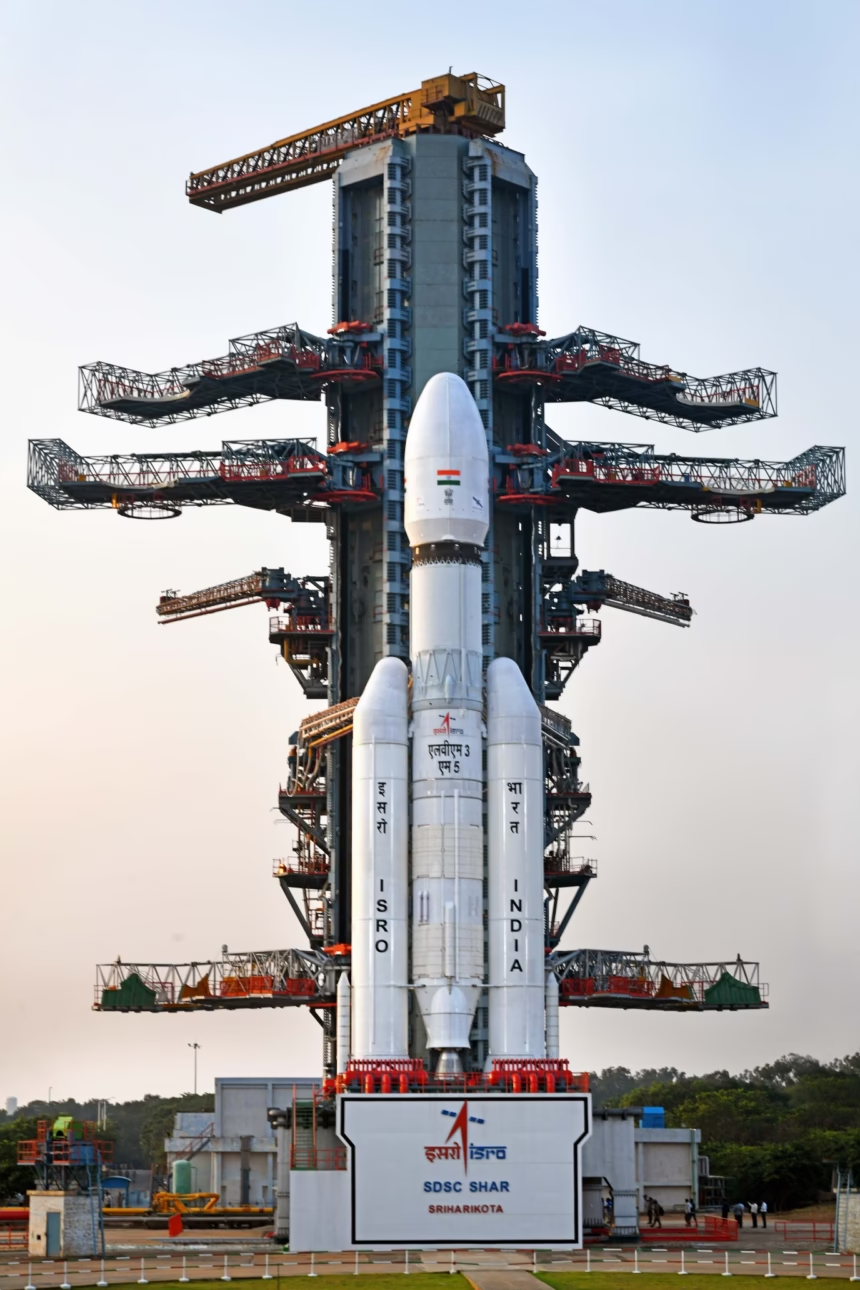Agartala: Nov 03. The Indian Space Research Organisation (ISRO) achieved a major milestone on Sunday by launching its heaviest-ever communication satellite, CMS-03 (GSAT-7R), aboard the LVM3-M5 “Bahubali” rocket from the Satish Dhawan Space Centre, Sriharikota, at 5:26 pm IST.
Weighing 4,410 kg, CMS-03 was successfully placed into a geosynchronous transfer orbit just 16 minutes after liftoff, marking a significant leap in India’s indigenous satellite technology and maritime communication capabilities.
Designed to be the backbone of the Indian Navy’s communication grid, CMS-03 will provide secure, high-capacity voice, data, and video links between warships, submarines, aircraft, and command centers across the Indian Ocean. The satellite carries multi-band payloads in C, extended C, and Ku bands, ensuring uninterrupted connectivity even in remote or contested maritime zones.
Replacing the ageing GSAT-7 “Rukmini”, the new satellite offers expanded bandwidth, stronger encryption, and broader frequency support—including UHF, S, C, and Ku bands—for enhanced real-time coordination and situational awareness.
CMS-03 is a key component of India’s Maritime Domain Awareness (MDA) architecture, enabling network-centric naval operations and improved fleet coordination across vast oceanic distances. It strengthens India’s blue-water aspirations by supporting secure communication and surveillance in the Indian Ocean Region.
Union Minister Dr. Jitendra Singh, Minister of State (Independent Charge) for Science & Technology and Earth Sciences, hailed the achievement on X, it reads, “Kudos Team #ISRO! India’s #Bahubali scales the skies with the successful launch of #LVM3M5 Mission… ISRO continues to script one success after another. Thanks PM @narendramodi for the unflinching government support.”
The launch marks yet another stride in India’s growing space capabilities, reinforcing its position as a leader in cost-effective and strategic satellite missions.










